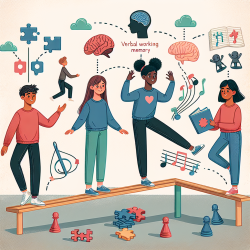Introduction
Rubinstein-Taybi Syndrome (RTS) is a rare genetic disorder characterized by intellectual disability, distinct facial features, and limb anomalies. The recent publication, "Diagnosis and management in Rubinstein-Taybi syndrome: first international consensus statement," provides a comprehensive overview of diagnostic criteria and management strategies for RTS. This blog aims to help practitioners improve their skills by implementing the outcomes of this research and encouraging further exploration into the syndrome.
Key Findings and Recommendations
The consensus statement highlights the importance of a standardized approach to diagnosing and managing RTS. Here are some key takeaways:
- Clinical Diagnostic Criteria: The statement emphasizes the need for both molecular and clinical diagnostic criteria, as some individuals may not have detectable genetic anomalies despite exhibiting classic RTS symptoms.
- Long-term Management: Recommendations include regular monitoring of growth, development, and potential complications such as cardiac anomalies and gastrointestinal issues.
- Interdisciplinary Care: A multidisciplinary approach involving geneticists, pediatricians, speech-language pathologists, and other specialists is crucial for comprehensive care.
Implementing Research Outcomes
Practitioners can enhance their care for children with RTS by integrating the following strategies:
- Early Intervention: Early diagnosis and intervention are critical. Speech-language pathologists can play a pivotal role in addressing communication challenges and promoting language development.
- Family Education and Support: Educating families about RTS and providing support can improve the quality of life for both the child and their caregivers.
- Personalized Care Plans: Developing individualized care plans based on the child's specific needs and symptoms can lead to better outcomes.
Encouraging Further Research
The consensus statement serves as a foundation for further research into RTS. Practitioners are encouraged to contribute to this growing body of knowledge by:
- Participating in Studies: Engaging in clinical studies and trials can provide valuable insights into effective treatments and interventions.
- Sharing Case Studies: Documenting and sharing unique cases can help refine diagnostic criteria and management strategies.
- Collaborating with Researchers: Collaborating with researchers and geneticists can facilitate the development of new diagnostic tools and therapies.
Conclusion
By implementing the recommendations from the international consensus statement, practitioners can significantly improve the care and outcomes for children with Rubinstein-Taybi Syndrome. Continued research and collaboration are essential to advancing our understanding and management of this complex disorder.
To read the original research paper, please follow this link: Diagnosis and management in Rubinstein-Taybi syndrome: first international consensus statement.










